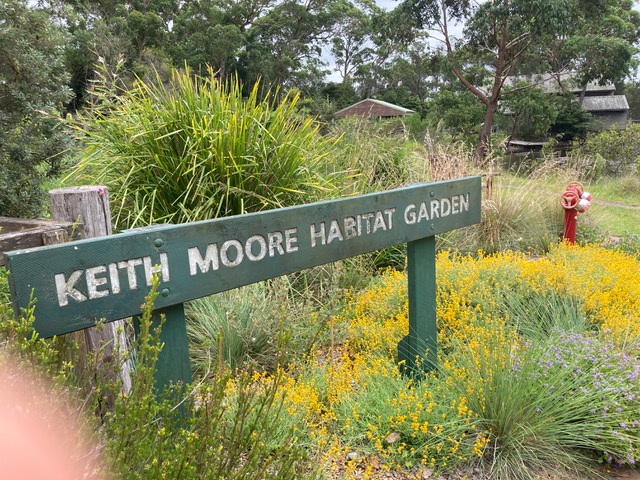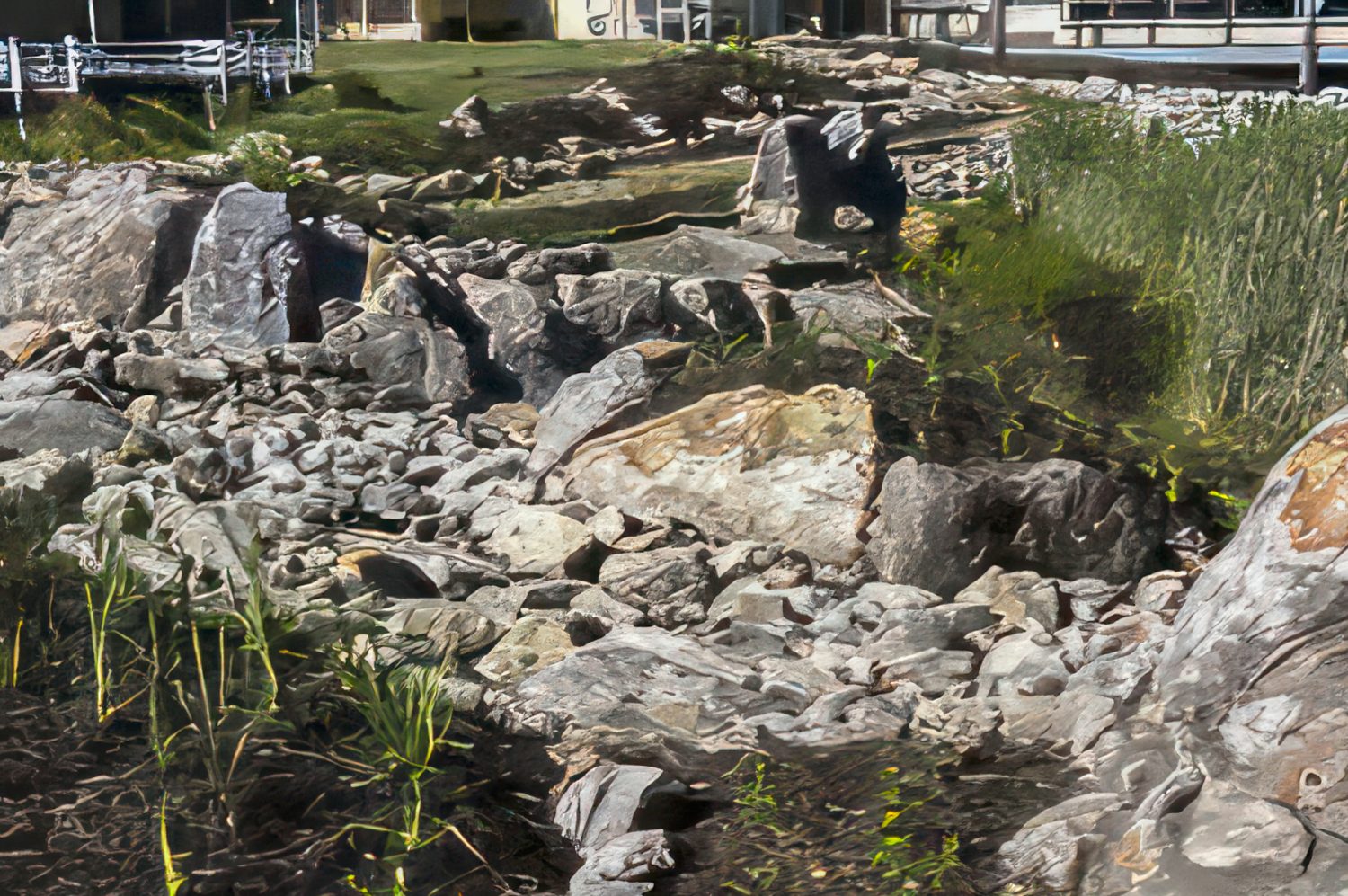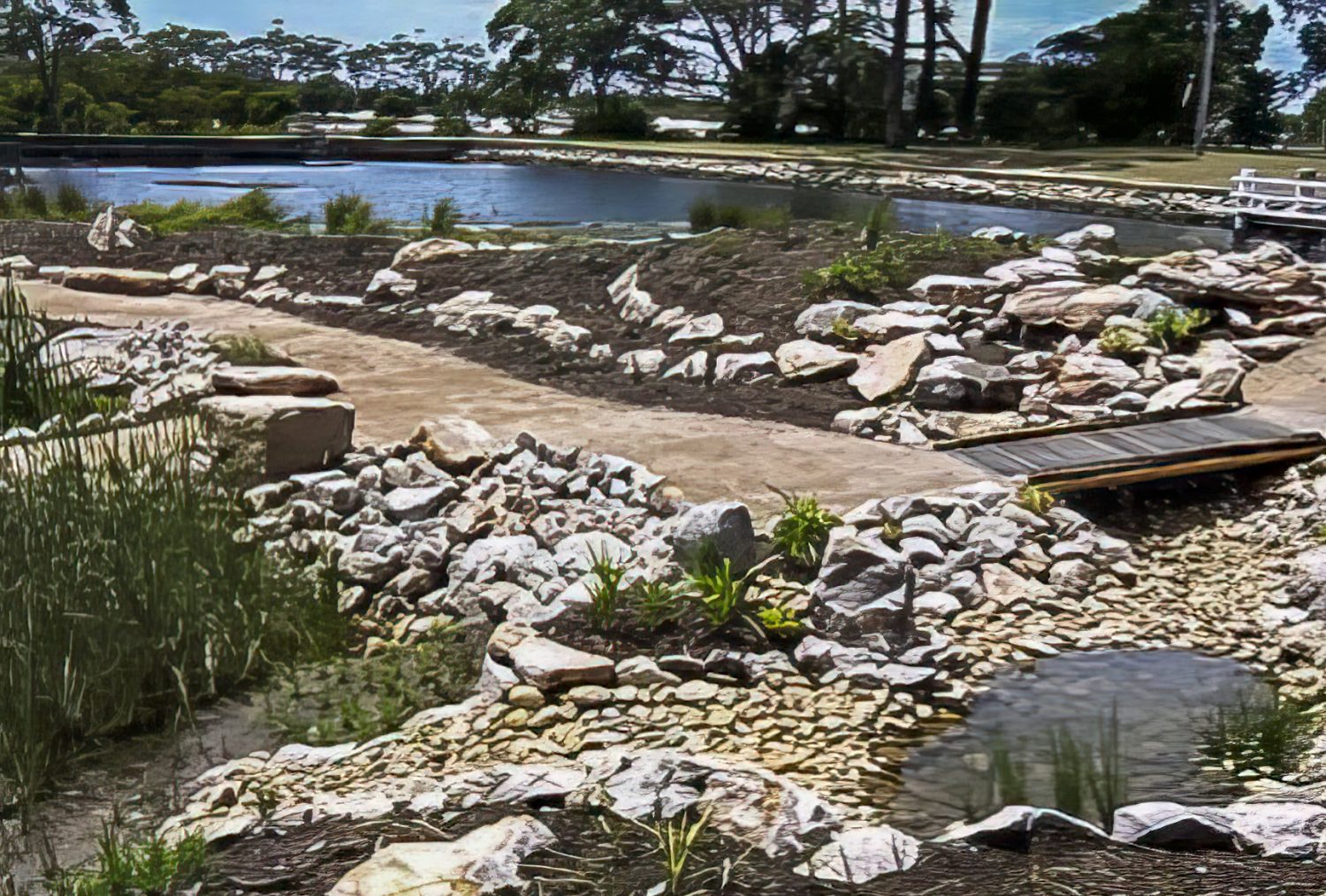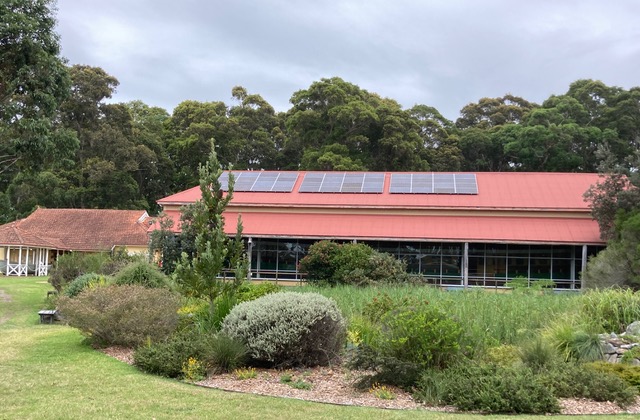Showcasing the natural environment was the creation of a successful habitat garden. This is the Keith Moore Habitat Garden in Huskisson. Volunteers from the Australian Plants Society NSW supported the project.
Where it is located
The Keith Moore Habitat Garden is located at the Lady Denman Heritage Complex, Huskisson, New South Wales on the shores of Jervis Bay. The Sydney Harbour Ferry, ‘Lady Denman’, built at the Dent shipyard, Huskisson in 1911 is on display at the complex.
The garden is a thriving habitat garden.

The garden creates vital links with the surrounding vegetation for birds, reptiles and other fauna, image Maureen Webb
Aim of the design – history
The aim of the design was to develop an Australian native plant garden that displays the local natural environment. Additional aims were to include local native (indigenous) plants, and to use the garden for educational purposes.
The garden was to be accessible to the public, especially the disabled. Retention and minimal disturbance to the existing frog habitat amongst the established native reeds and bulrushes was essential. At the same time the design created other types of habitats around the edges of the designated area.
Below are images of the construction of the garden.




Shape of the garden
The shape of the existing area lent itself to a modified shape of Jervis Bay. As such, the design of the Garden followed the theme of Jervis Bay and surrounding areas. It included features such as Point Perpendicular, the Ruined Lighthouse, the Hole in the Wall, Bowen Island, beaches, Currumbene Creek and a mooring post for Huskisson wharf.
A small causeway represented Plantation Point where the public could experience the frog habitat.
A three-pond water feature represented St. Georges Basin, Lake Windemere and Lake McKenzie.

On the left is the wet area. The Lady Denman ferry was floated here before her final resting place inside the Museum. Image Maureen Webb
The construction of the area used existing stockpiles of sandstone rock found onsite, along with other recycled materials. Many features were represented by specially selected and placed sandstone rocks.
Indigenous plant species formed the themed vegetation types in the garden. The vegetation types selected are Grassland, Dune Woodland/Heath, Heathland, Shrubland and Sedgeland. The plants used were to be botanically significant for the local area, horticulturally suited to the site and aesthetically pleasing.
The design took into account the educational aspects of a water wise native garden. Volunteers assisted with the construction, planting and maintenance of the garden.
The garden now
The garden is now a thriving habitat garden, with the design fully realised. It has grown and settled in over a number of years. It showcases the successful creation of a habitat garden.
As Maureen reports: When we sit on the veranda of the museum for lunch on wet days, we look out to the garden. Most days Blue wrens, Golden whistlers and other birds visit. This is all possible as most of the complex is now fully vegetated. Surrounding the garden and supporting it are the surrounding bushland and the Wirreccoo Wildflower Garden.
The garden provides vital links for the ongoing support of local birds and wildlife.



The garden is now a true habitat garden, particularly for the frogs. In turn they bring in the snakes! Images Maureen Webb
The garden now: https://www.jervisbaymaritimemuseum.asn.au/museum-grounds.html
For another story on habitat gardens, click here.
From the May 2007 issue of the Study Group Newsletter. More recent photos and comments from Maureen Webb.
 Australian Native Plants Society (Australia)
Australian Native Plants Society (Australia)